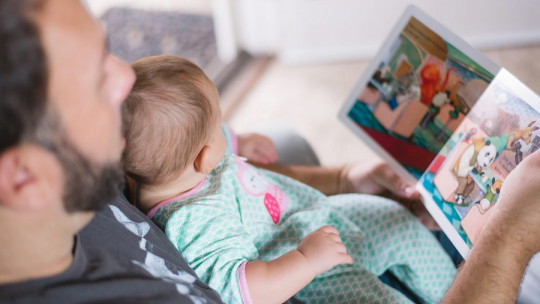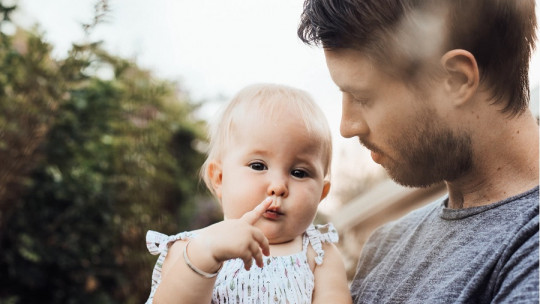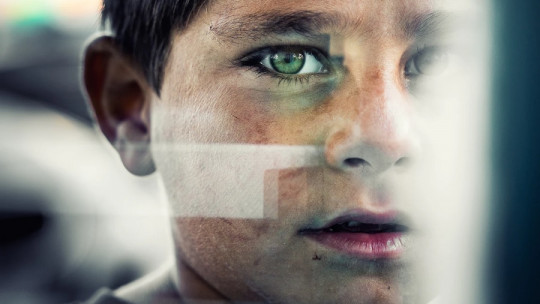
Seeking professional help to improve your own parenting style is always useful and necessary, even if you are a good parent. However, sometimes it is not possible to be fully aware of what things are being done wrong when raising children.
One of the techniques that helps to be aware of errors when interacting with children is the video-feedback technique which basically consists of recording an everyday situation between the adult and the child and analyzing what may be going wrong.
Thanks to the development of mobile devices and video cameras, this technique has been gaining more and more use in the therapeutic field. If you want to know more and, especially, its usefulness with children with problems, keep reading.
What is the video-feedback technique?
The video-feedback technique is a type of intervention, used both in the clinical and social fields of psychology, which is used to record a person’s behaviors, detect those that may be a problem and make them see, through the viewing the recorded video, what should be changed.
Going to the field of child psychology and, especially, in relation to social services, the video-feedback technique has notable use when detecting situations in which a negligent parenting style is being carried out. Thus, through this tool it is possible capture situations that may pose an impediment to the correct development of the child or even pose a risk to your own life.
Viewing the video allows for the creation of a shared space between the child and their caregivers, promoting empathy and sensitivity on both sides. Thus, parents, once they are aware of how the child feels or what problems were preventing him from developing properly, are able to change their parenting style in favor of better growth for their children. All of this is done while the therapist emphasizes the positive aspects of the adult-child relationship.
How is the application of this technique developed?
Nowadays, recording quality videos in therapy is quite easy for professionals, thanks to the cost of high-quality cameras. In addition, the videos can be easily managed, showing the sequences in which the problem behavior is performed. It should be understood, however, that any type of recording is not valid The recording itself must be structured appropriately, according to how the therapy is expected to develop and those behaviors that are considered relevant to highlight.
During the first two sessions, the children’s behavior is focused on and, in the following sessions, the relationship between the caregiver and the infant is analyzed. Because it begins with the child’s behavior and not with that of the adult, it is possible to establish a more solid alliance between the caregiver and the therapist This is because the parent or legal guardian does not feel attacked when starting therapy, and therefore does not feel that he or she is solely responsible for what is happening to the child.
Thus, by the third session and those that follow it, the alliance between the professional and the parents is comfortable and secure enough to be able to make the parents behave completely naturally, showing their own parental style without makeup and allowing the therapist change as necessary.
Theories that support this technique
The application of this technique is based on two theories that have been fundamental in explaining the emotional development of children, in addition to helping to better understand how infants improve their social interactions. Thus, the following two psychological theories can be highlighted as a basis.
1. Attachment theory
The video-feedback technique has been developed taking into account attachment theory, developed by John Bowlby and Mary Ainsworth
One of the pillars of the theory is that infants seek security and care from adults, seeking those caregivers who offer them these aspects.
The behavior of these children will depend on their relationship with their caregivers Ideally, their parents are a source of security, care and love. In this way, an intimate and warm relationship will be established, which will mean proper emotional development for the baby.
According to this same theory, in order to develop a secure attachment, it is necessary that the child’s caregivers have the ability to adequately and accurately perceive the signals that the child emits and know how to respond to them.
The objective of the video-feedback technique is to ensure that the child establishes a secure attachment with his or her caregivers, detecting in the first instance possible negligent behavior carried out by their parents or guardians legal.
2. Social learning theory
Albert Bandura’s social learning theory has also been related to this type of technique. According to the theory, Individuals learn by observing how others are rewarded for behaving in a certain way
Many parents, whether due to ignorance or negligence, do not know how to deal with their children’s negative behaviors, and only apply punishments to see if they can extinguish them. Interventions using video feedback allow parents to show what aspects of their parenting style were not working and, by encouraging the positive, change their children’s behavior in the most appropriate way.
Also, by viewing examples of what should be done, parents who go to therapy can learn through observation how they should behave appropriately with their children.
Key aspects when applying this type of technique
The application of interventions that make use of video-feedback techniques is not as simple as it may seem. To do this, it is necessary to take into account a series of key aspects to be able to extract the maximum juice from the technique
One of the main factors to take into account is the relationship between the caregivers and the therapist. This is crucial to ensure the necessary duration of therapy, encouraging the involvement of parents or legal guardians in changing their parenting style and modifying unwanted behaviors in the child. It is very important to make the caregivers see that the therapist seeks the same thing as them, the well-being of the child and promote the child’s adequate emotional development.
For it, It is necessary for the therapist to show support to the family, without judging her in case a mistake has been made before coming to therapy. Family members should feel heard, so it is very helpful to spend a little time with each of them to talk about possible problems they have suffered, which could explain certain failures when raising children.
The application of this technique should be done in a pleasant and fun way, as long as it is not a case of true child abuse. Parents should not feel guilty and see therapy as a kind of punishment for not having known how to provide their children with a secure attachment.
Although the intention of this type of technique is to improve the behavioral aspect and make both parents and children see What hasn’t been working so far? it is very important to highlight the positive points, such as that they have been given a roof over their heads, clothing, food, Christmas gifts…
Support technique for adopted children
The social and emotional development of adopted children is influenced by the experiences experienced before adoption. During that time, they may have suffered abuse of all kinds. But it is not only the period before adoption that may have influenced them. They are also the experiences during the first months with their new parents which, depending on how these new caregivers knew how to handle them and the way the infant behaved, may or may not have been a source of difficulties.
There is extensive research in the field of psychology that maintains that adopted children may suffer developmental delays, including aspects of psychomotor, cognitive, emotional, attachment, and difficulties in social relationships. However, if they are adopted by families who know how to provide appropriate stimulation, these children show outstanding development.
Despite this, It is very common among adopted children to not develop secure attachment and, as a consequence, suffer some behavioral problems. Interventions focused on improving parenting style, such as the video-feedback technique, are of great help to families with adopted children, promoting improved emotional and social development in this type of children.








